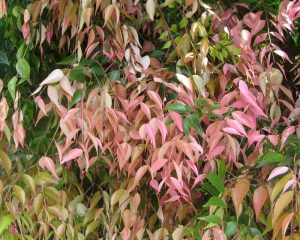What Are the Best Lilly Pilly Varieties?

Syzgium Luehmanni or Royal Flame
Lilly pillies are some of the most popular plants in Australia. People enjoy their lovely changing colour and how they grow voluminously well, making them perfect for hedging and topiaries. Lilly pillies yield fluffy white or greenish flowers in the spring and red, purple or whitish berries. You definitely will get a visually pleasing, colourful garden or lawn if you opt to plant the lilly pilly as hedging.
There are so many varieties of lilly pillies in Australia that there’s even a lot of confusion over their names. But if you’re looking through the best lilly pilly varieties to determine which is the best to plant in your property, the list below provides the best choices as they are the least prone or most resistant to the lilly pilly psyllid (native insect related to cicadas) that causes ugly pimples on the leaves of the plant.
- For the big variety (those that grow five metres and over), the top 2 picks are the Acmena smithii var. and minor Syzgium luehmannii. These two are easy to maintain, as they are completely resistant to psyllids.
- For the mid-sized variety (those that grow three to five metres in height), the best lilly pilly variety is the Acmena smithii or Hot Flush. It’s the only one among the popular mid-sized varieties that’s resistant to psyllids.
- For the little variety (those that grow two metres and below), the Syzgium luehmanni or Royal Flame is the best performer and is also completely resistant to psyllids.

Syzgium Luehmanni in Bloom
- For the tiny or 1 metre lilly pillies, Acmena smithii or Hedgemaster is the perfect choice.

Acmena Smithii
But if you’re not too concerned about the effect of psyllids on your lilly pilly, the Syzgium austral or Bush Christmas, S. austral or Elite, and S. austral or Aussie Southern are great beauties definitely worth considering. All of these grow really well but you really will just need proper care for these varieties. Your best bet would be to turn to professional service providers for tips on how to prevent the attack of psyllids and other problems that lilly pillies encounter, such as scale (soot-like stains) which is often caused by ants and pollution.
It’s worth mentioning as well that lilly pillies are more suitable for warmer climates. Therefore, if you live somewhere that’s chilly and often gets frost, seek the advice of lawn care professionals on the best way to plant lilly pillies and ways to care for them given the challenging climate conditions.
Call Jim’s Mowing on %%PHONE_NUMBER%% for all of your gardening needs or simply book online for a free no-obligation quote!


